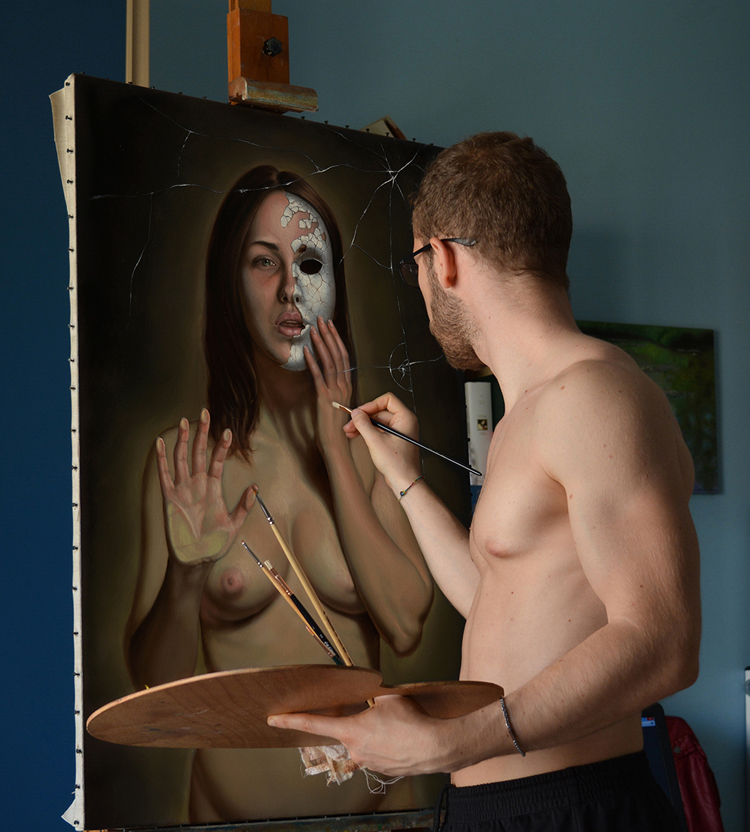
WHO is Edoardo la Francesca?
“I’ve been a whole week trying to figure out ‘WHY’ are you interested to feature me on your blog?” Edoardo curiously, and naively, said to me as soon as I took my first step into his studio-apartment. Stunned at how such a talented artist could possibly say something like that, I stared at him for a few seconds and then replied: “BECAUSE…I’m blown away by your meticulous and realistic approach of painting, and I would like to know more about you, and your art, and to share your artistic-bravura with others.” “Oh, I’m exulted!” Edoardo answered, and our discussion continued as follows:
Eve Cocks [EC]: Edoardo, since you’re still establishing yourself as an artist here in Malta, could you tell me and the reader something about yourself?
Edoardo la Francesca [ElaF]: This feels strange! Ok, so…I’m Sicilian, I was born in Trapani in 1991 and I’ve lived in Trapani up until November 2016.
EC: Why did you leave Trapani?
ElaF: A friend of mine was planning to move to Malta, so I decided to tag along for a few weeks until she settled down.
EC: And by the look of things, it seems that you’ve decided to stay for good too 🙂
ElaF: Yeah… it looks like it 🙂
EC: Edoardo, when did you start drawing, painting…?
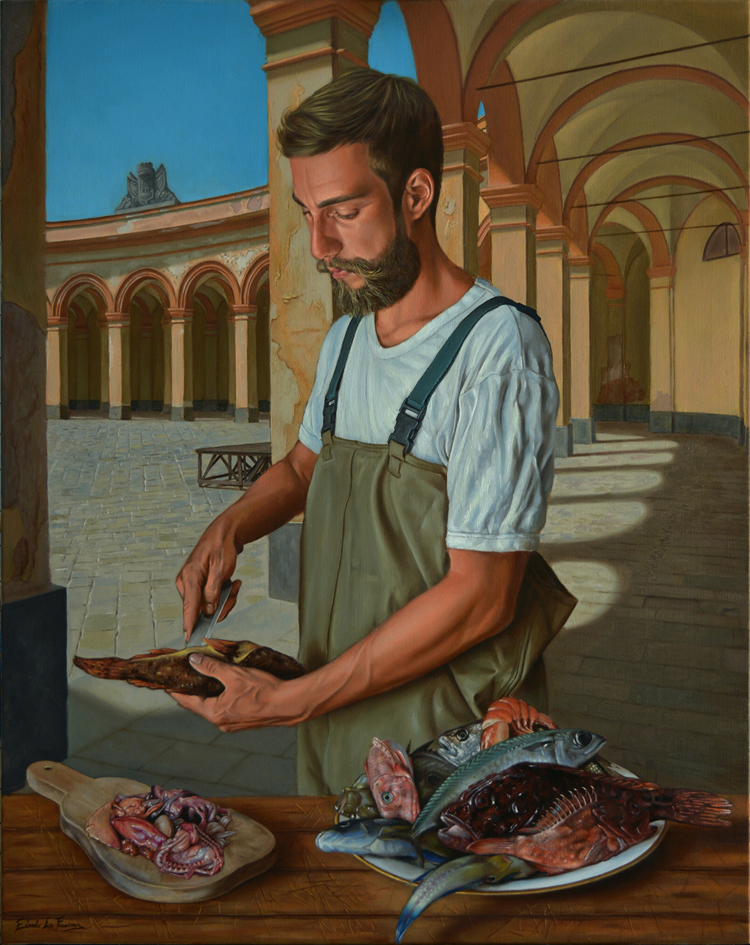

Above: The Fisherman, Oil on Canvas, 2016
Below: The Fisherman (Detail)
Photo Credit: Edoardo la Francesca
ElaF: Practically, I’ve been drawing since I was a kid. I used to draw anything, from landscapes to mundane objects. When I got older (at the age of thirteen), I enrolled at the Liceo Artistico Buonarroti di Trapani, Sicily. At the Liceo, I mainly practiced drawing though, and not painting.
EC: How come?
ElaF: Because the Liceo was not a fine arts academy: it was a lower secondary school where I had to study other subjects besides art. In fact, only two lessons per week were dedicated to art, and most of these lessons focused on drawing. I was briefly introduced to the use of acrylics, oils and tempera during my 5th year (which was my last year at the Liceo). Nonetheless, it was only after I had finished the Liceo – when I had just started reading for a ‘Conservation and Restoration of Cultural Heritage’ degree at the University of Palermo in 2009 – that I actually learnt, on my own initiative, how to paint.
EC: Oh…so you’re also a conservator-restorer?
ElaF: Yes, that’s my current full-time job in Malta.
EC: Wow!
ElaF: 🙂
EC: I guess that your conservation-restoration course is what inspired you to take on painting and adopt the realist, 17th century old master technique?
ElaF: Well, it did play a part, but what really set off my interest to master such a technique and start painting (and become an artist, really) was Caravaggio’s 400th Anniversary Exhibition, which was held at the Scuderie del Quirinale, Rome, in 2010. That exhibition: “mi ha propio aperto gli occhi!”
EC: So Caravaggio is the man behind your ‘life-like’ approach?
ElaF: My mission (so to speak) as an artist is to convey and evoke emotion within the viewer, and Caravaggio’s realistic way of rendering his subjects does play a lot in producing emotion in the spectator.
EC: Any other influences?
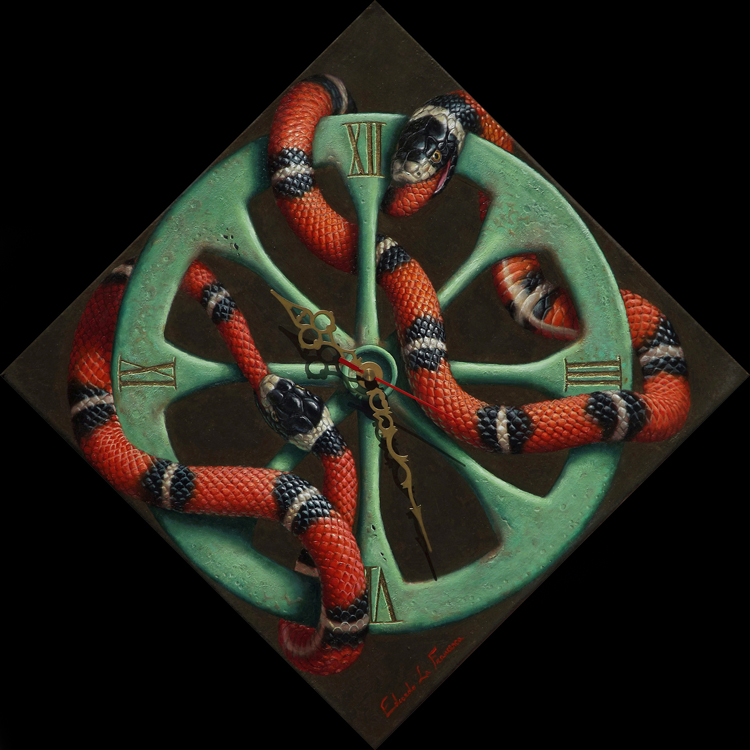

Above: Rota Temporis, Oil on canvas, 2015
Below: Rota Temporis (Detail)
Photo Credit: Edoardo la Francesca
ElaF: Titian and Anthony van Dyck are other favourites of mine.
EC: Earlier you said that you taught yourself how to paint. Could you elaborate?
Elaf: I learnt painting through experimenting and failing, through internet research, and talking to artist friends in general. I’ve also learnt a great deal from emulating the old masters and nature. My conservation-restoration studies gave me the opportunity to see up close and analyse different old masters’ compositions and techniques (colouring, brushwork…).
EC: So you’ve never felt the need for some structured training?
ElaF: Well, it was only recently that I undertook a couple of crash-courses: one was on the use of pastels, and the other was on contemporary academic-figurative painting. The pastel course was held in Rome, by the Spanish artist Rubèn Belloso Adorna. He is well-known for his hyper-realistic portraits in pastel. I undertook this course a couple of months before I moved to Malta. I generally love working in oils, so Rubèn got me hooked on a new medium which, similar to oil painting, allows me to achieve superb realistic effects. On the other hand, the contemporary academic-figurative course was held by Italian artists Roberto Ferri and Giorgio Dante. Both of them are excellent figurative artists who specialise in the academic old master technique. The course was held in Toscana last April, and I have to admit that it really gave me “una marcia in più!”
EC: Out of these artist-tutors, who impressed you mostly?
ElaF: Roberto Ferri, without a shadow of a doubt. In Italy, I consider him as being the portavoce of this new ‘return-to-academism’ movement.
EC: The human figure tends to feature prominently in many of your works…
ElaF: Since I’m after emotional impact, I find the human figure as the perfect ‘art form’ through which I could communicate and express many different emotions.
EC: Any particular themes that interests you?
ElaF: Well, I am inspired by many themes, such as the profane, the sacred, and the mythological.
EC: Edoardo, I’m impressed by most of your work, but I have to admit that, I’m particularly fascinated by Our Lady in Prayer, by the way you depicted her hands…
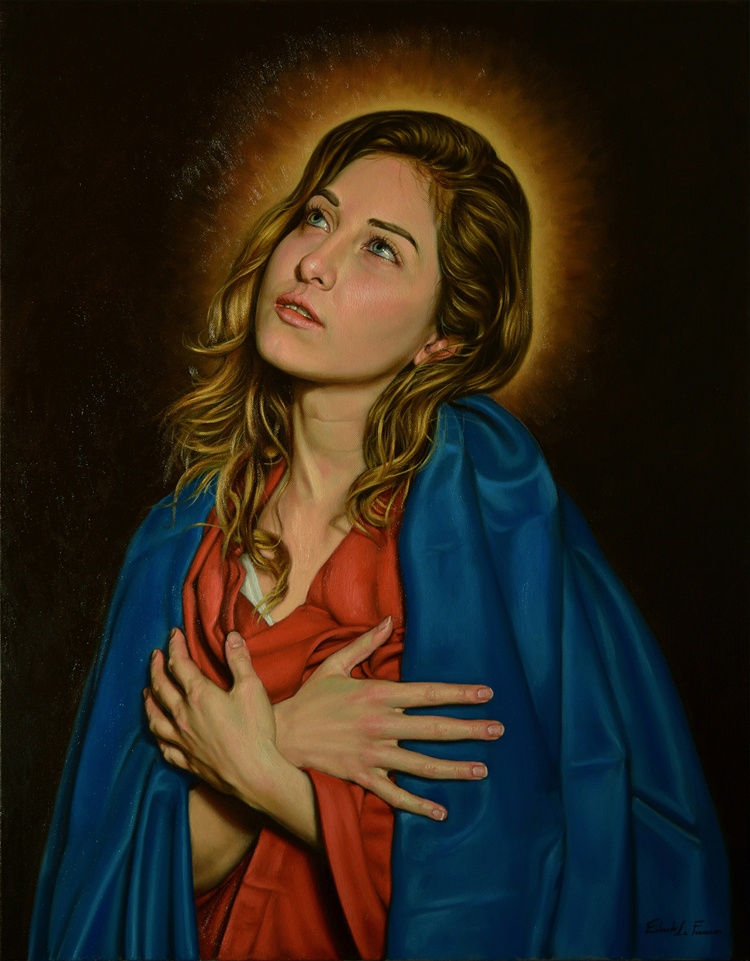

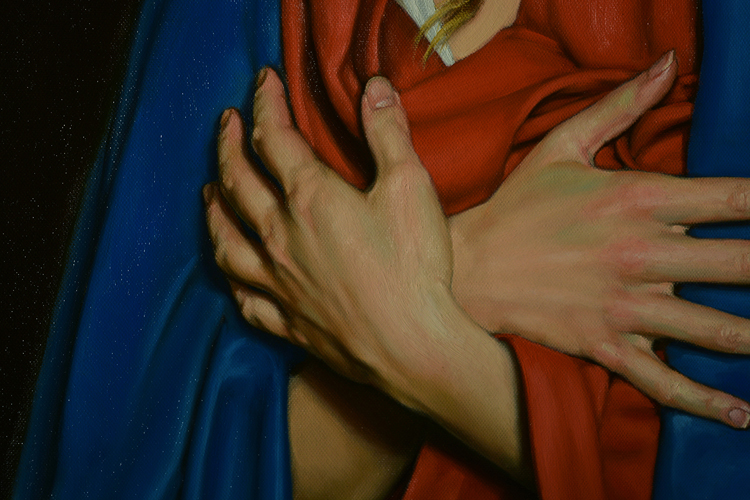
Our Lady in Prayer, Oil on Canvas, 2017
Photo Credit: Edoardo la Francesca
ElaF: Our Lady in Prayer was an experiment: I wanted to create something sacred in a contemporary fashion. I started working on this painting in January, and I finished it sometime in March. Unfortunately, not everyone seems to like the fact that I painted a ‘contemporary Madonna’!
EC: Oh dear…!!!!
ElaF: 🙂
EC: The model that posed for Our Lady in Prayer, is she a friend yours?
ElaF: Yes, she is. Most of the models that pose for my pictures are either friends or family members.
EC: Did you ever hold your own personal exhibition, or take part in a collective?
ELAF: I had organised my first (and so far ‘only’) solo exhibition in 2013 at the Biblioteca Comunale, Montelepre. The exhibition was called ‘Tra Pittura e Realtà’. However I have to confess that: “non era un granchè!” As regards to collective exhibitions, I began participating in collectives around two years ago, thanks to the art critic and art historian Francesca Mezzatesta, whom I had met in Palermo. Francesca had faith in my ability as an artist, so she included me in several exhibitions that she had curated including: ‘Verso Lo Zenith. Edizione III’ (Galleria d’Arte Civica Moderna G. Sciortino, Monreale); ‘As Time Goes By’ (Melori & Rosemberg Gallery, Venezia); and ‘I Confini tra il Volto e la Maschera’ (Museo Emilio Greco, Sabaudia).
EC: To conclude, where do you see yourself in ten years time?
ElaF: This is a very difficult question! Nonetheless, although I’ve been denying it for ages, eventually… I would like to build a career as an artist. My aim is not to become a ‘world-famous’ artist, but like many other artists (I guess), my ambition is to be able to live off art one day; to live off something that I’m really passionate about. So, for the time being, this is the most genuine answer that I can give you. Hopefully, I will make it!
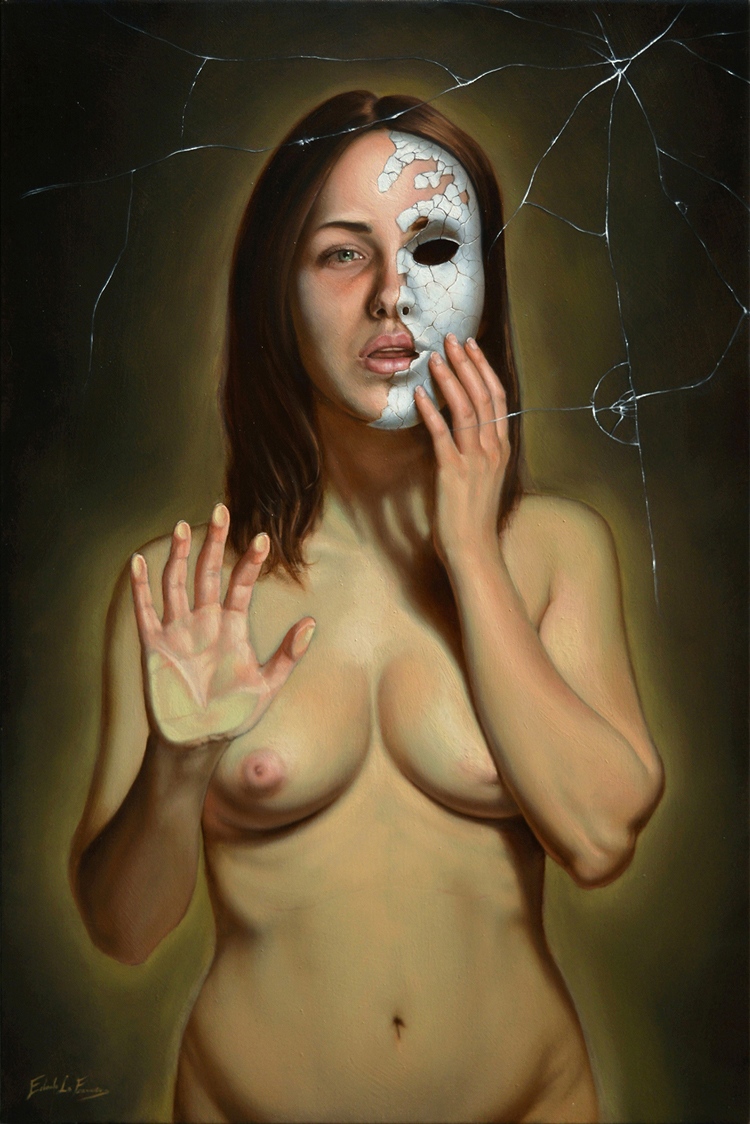
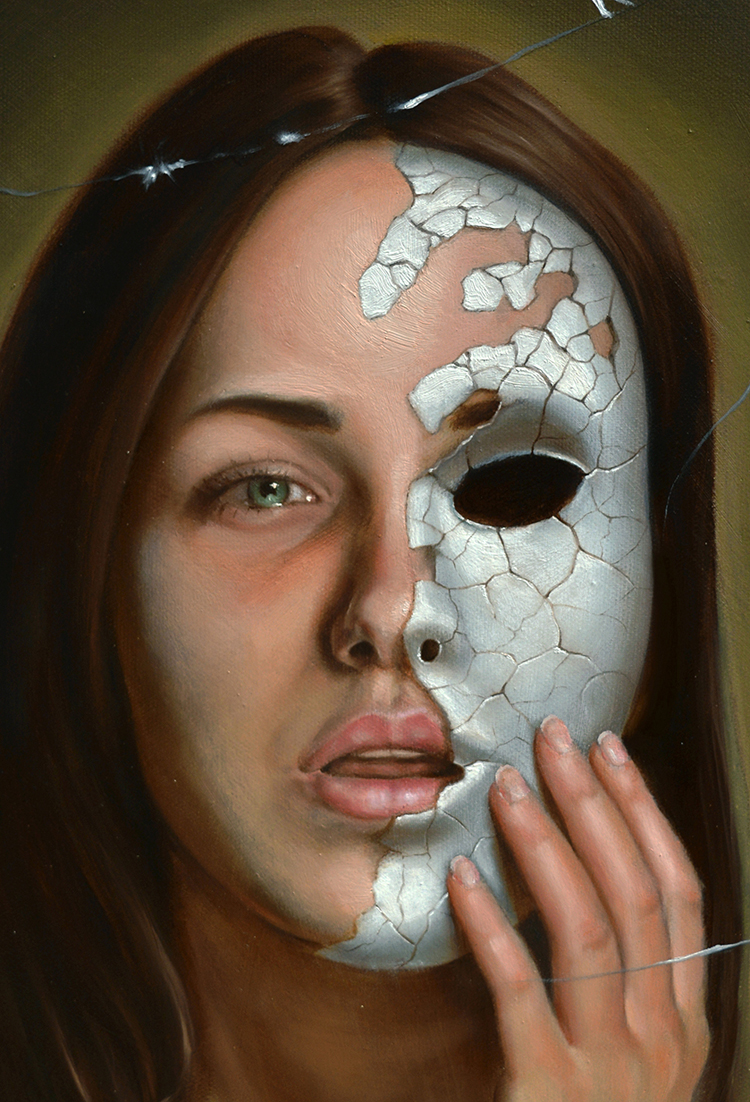
Above: The Reflection of the Soul, Oil on Canvas, 2016
Below: The Reflection of the Soul (Detail)
Photo Credit: Edoardo la Francesca
If you would like to know more about Edoardo click on this link https://www.facebook.com/edoardolafrancescatp/
